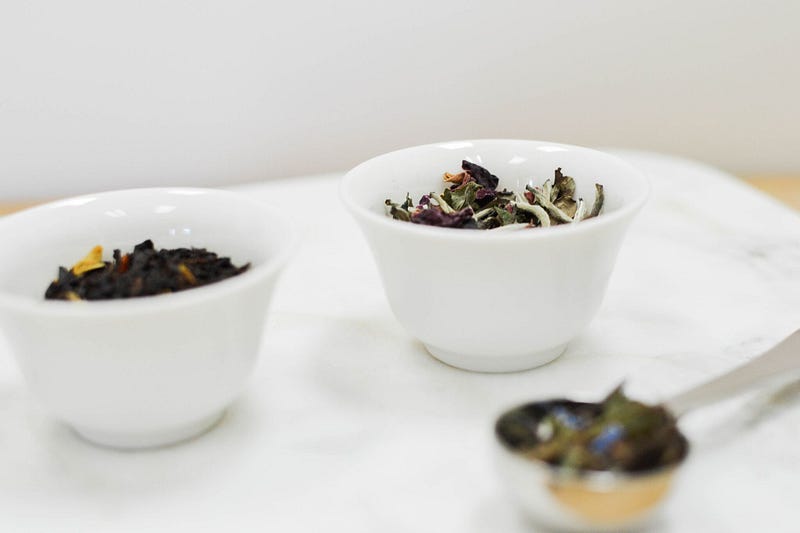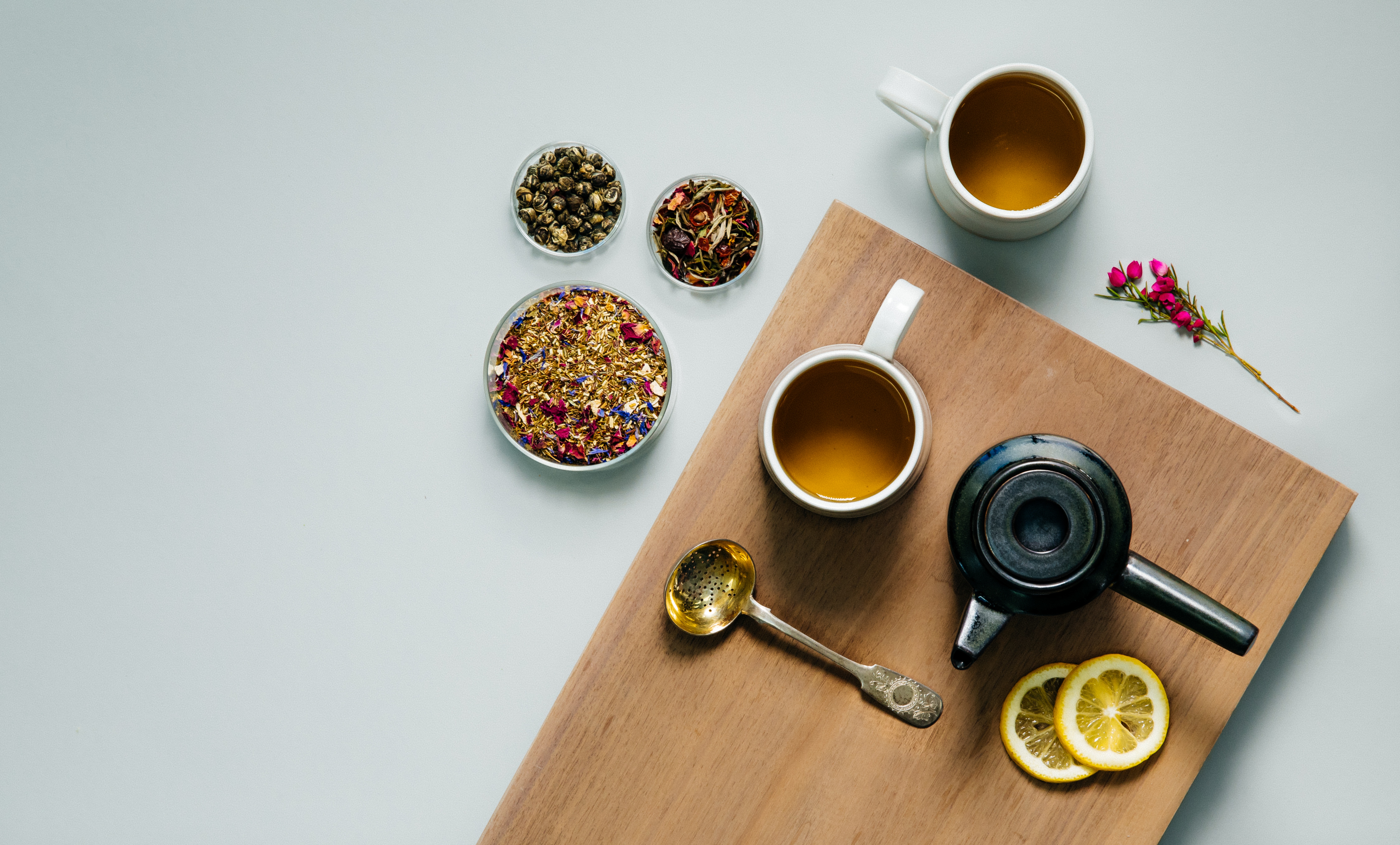In the first part of the Science Behind Taste, we identified the three senses needed for our brain to determine a flavor. These included our taste buds, trigeminal nerve responses (chemesthesis), and aromas (olfaction). In that article, we discussed the first two in-depth and how they apply to tea tasting. In this section, we will discuss olfaction response to taste.

Olfactory System
Olfaction is a sensory perception of volatile components interacting with the olfactory receptors in the nasal cavity. There have been 7,100 volatile compounds identified in food which, depending upon their concentrations and sensory thresholds, contribute to the aroma perception. A person’s ability to detect odors can be affected by genetics, olfactory fatigue, temperature, and humidity. Regular human olfactory systems can distinguish at least 1,000 different odorants, while highly trained professionals, like perfumers, can distinguish as many as 10,000!
Black tea has about 550 different volatile components, while green tea only has about 100. This is due to the fact that most volatile components are created during the oxidation process. The main aromas found in tea can be classified into 5 groups: Green Aroma, Floral Aroma, Roasted-Nutty Aroma, Coconut-Butter Aroma, and Animal Aroma.
There are two parts to our olfactory system. Orthonasal smelling uses the nose to detect smells at a distance, while retronasal smelling uses the holes in the back of our throat to detect smells in the mouth. The brain attributes retronasal aromas with the mouth and not the nose. Furthermore, orthonasal and retronasal smells don’t always match.
The majority of olfactory epithelium are located on the olfactory cleft, which is directly linked to the olfactory bulb in the brain. The brain considers the stimuli associated with each food and forms a unique perception of the flavor for later recall. Humans are very poor at identifying individual components of a mixture. However, this ability can be learned and people spend years learning to identify odors.
Aromas (smells) are directly linked to emotional and memory centers in our brain. This is why some people drink their cup of tea and say, “This reminds me of Grandma’s basement.”
This person has an emotional connection with their Grandma and remembers a time in her basement. The more we can train ourselves to associate the aroma, and for that matter the flavor, with an emotion or memory, the better tasters we become.
Let’s try an experiment. Read the below sentence and then close your eyes. What do you see, taste, smell and feel?
Little boy Mikey was eating freshly-made cotton candy while watching the circus animals.
If we have ever been to the circus or have ever eaten cotton candy, consciously or subconsciously, our brain took us to a moment in time that we associated with this event. Maybe it was in a circus tent sitting in your seat watching the animals. Our taste buds were ready to taste that cotton candy, our olfactory system was ready to smell the wonderfully sweet cotton candy, as well as, possibly the foul stench of the animals. Simultaneously, our brain was working overtime to associate other tastes and smells like funnel cakes, elephant ears, deep fried Twinkies, barnyard, hay, etc. that our brain links to these tastes and aromas. This is why it’s important, during a tea tasting, to first let everyone taste the tea in silence and then discuss the nuances in the cup.
Let’s try another experiment. Read the below sentence and then close your eyes. What do you see, taste, smell and feel?
Narelle’s favorite food for breakfast is vegemite.
(Now close your eyes)
Assuming you are not Australian, your brain probably struggled with this one. Most of us may not know someone or have even heard of the girl’s name Narelle. For most of us, our brain couldn’t determine the sex of the person in this sentence and instead put ourselves in place of that person. When we read the words ‘favorite food for breakfast’, we each came up with what we liked to eat for breakfast; bacon, eggs, waffles, syrup, etc. Our taste buds were ready to enjoy this food and we could almost smell the breakfast. But when the word vegemite hit us, we did one of two things: If you have never had vegemite your brain stopped and said “What!” or if you have had vegemite, your brain switched from your favorite breakfast to foods that have a salty, molasses, soy sauce taste. Liken the second example to someone who has never tasted tea before or experienced the specific flavor you are tasting.
Try tasting the tea silently first, then explain the nuances in the cup, and then ask them to taste it again. The second time they taste the tea, they will have a more memorable experience.
Join us on Twitter to share your experience with the above experiments with other. We’d love to hear your comments.
Putting It All Together
Now that we have discussed what our brain needs to identify flavor (taste buds, trigeminal nerve response and olfaction), let’s discuss what is in two leaves and a bud. First, half the solid matter is insoluble, meaning it will not come out during the steeping process. The non-volatile, soluble parts include polyphenolic compounds, carbohydrates, pigments, alkaloids, and other organic acids. These are the basic components that influence the taste, mouth feel, and color of tea. There are also small amounts of volatile compounds that constitute the essential oils, responsible for the taste and aroma of tea.
White Tea
Since nothing is done to prevent oxidation, skillful processing induces the production of complex carbohydrate compounds and L-theanine amino acid producing the sweet taste of white tea. Since nothing is done to promote oxidation; relatively few aromatic compounds are created in white.
Green Tea
The astringency of green tea is a result of the high catechin content. The brothy taste of some green teas comes from amino acids, especially L-theanine, which accounts for 60–70% of the total amino acids in the tea leaf. Caffeine contributes to the bitter taste of green teas. Pan fired teas like Dragonwell have an increase in L-theanine and more intense aromas. Aroma of shaded teas (gyokuro, matcha) is less because of the shading. The aroma from these teas are sometimes referred to as rice-straw since this is what is often used to shade the bushes.
Oolong Tea
Because the catechin count in oolong tea is halfway between green and black, oolongs have a very complex taste and aroma and is further distinguished by the unique flavonoid oolonghomobisflavin. Catechins oxidize into Theorubigins, which account for the mild and less bitter flavors. Strong flowery aromas are created through longer withering, both sun and indoor, with slow oxidation. Some oolongs, such as Wu Yi Rock Oolongs, are prized for their minerally taste.
Black Tea
Theoflavins determine the characteristic briskness and brightness; theorubugins contribute to strength, body, richness and fullness; while caffeine contributes to the bitter taste of black teas. Due to heavy oxidation, many volatiles are produced that range from malty to earthy to leathery to smoky.
Summary
As you can now see, there is a lot more going on biologically when we consume that glass of iced or hot tea. Understanding how one identifies flavors, helps focus our tea selections when matching teas to menu items or creating custom blended tea drinks. Having the right balance ensures a wonderful, memorable experience that your consumer will associate with your specific location long after they’ve consumed their beverage.
Art of Tea is an award winning purveyor of specialty and organic teas, based in Los Angeles, CA.
If you found this article helpful, please share it with coworkers, colleagues, and fellow lovers of tea.

